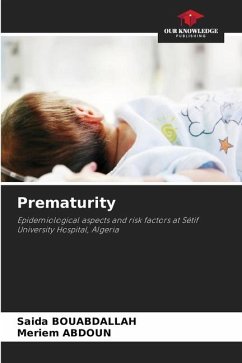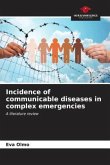Prematurity is responsible for high neonatal morbidity and mortality. The aim of this study is to set up an epidemiological surveillance system for prematurity in the Sétif region. A longitudinal survey was carried out on all premature babies registered in Sétif, supplemented by a case-control survey to study the various risk factors. The incidence was 3.9%. Risk factors included a history of premature delivery, rural habitat and inadequate prenatal surveillance, multiple pregnancies, cervical incompetence, placenta previa, premature rupture of membranes, hypertension and anemia. Morbidity was dominated by infectious complications, metabolic and respiratory distress The mortality rate was 10 i.e. one neonatal death in two was related to prematurity. The causes of death were respiratory distress, infection and asphyxia. Better monitoring of pregnancies, regionalization of perinatal care and the creation of level III neonatology units, would reduce the morbi-mortality linked to prematurity.








